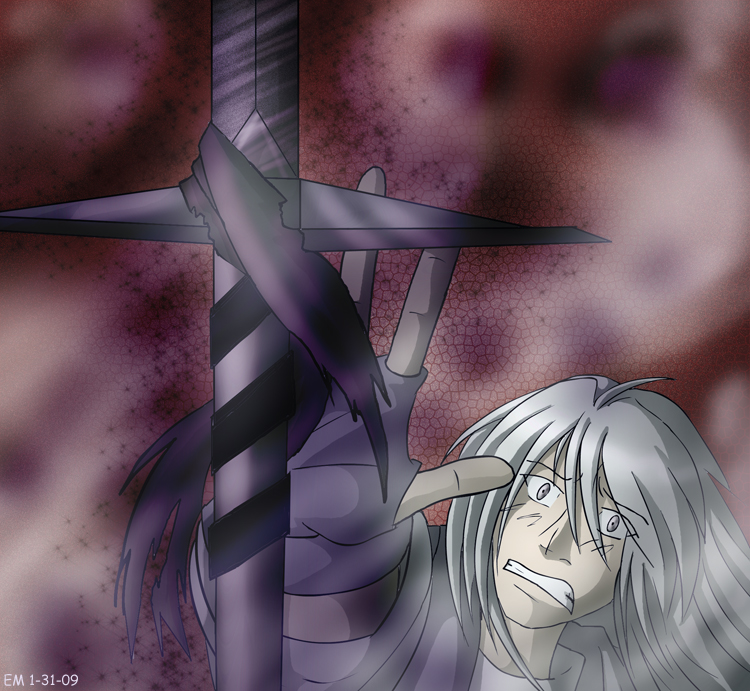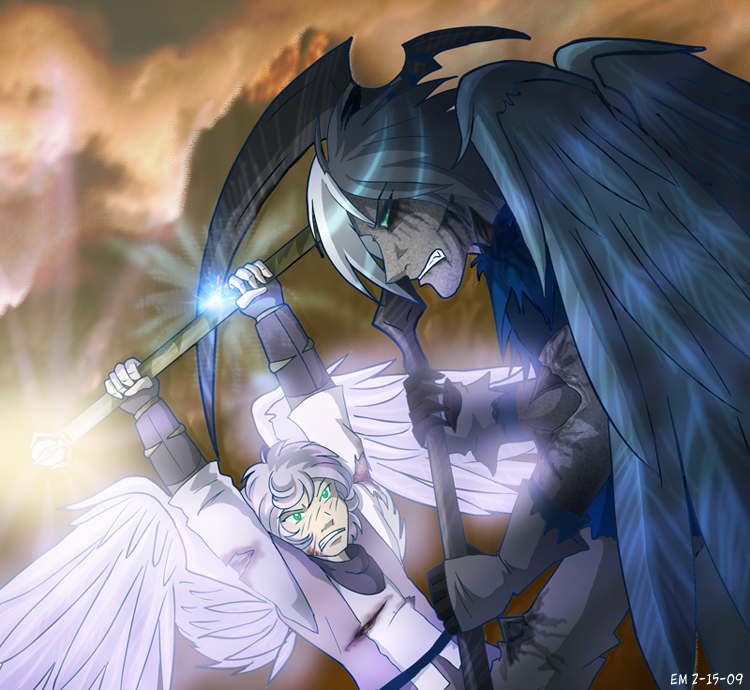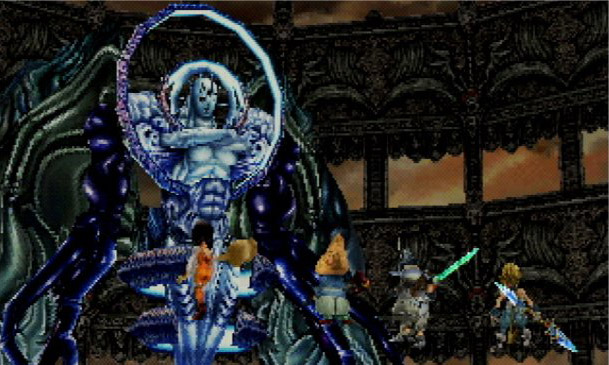I’ve written a couple stories, but I always get stuck at the climax. You know, the part where everything ties together and the big “happening” happens. The big decider of everything! At least that’s what I think it is. When I hit this climax, I write slower and slower, and I can’t keep track of the flow. It seems the more I plow through the climax, the harder it gets to tie everything together, until soon I’m intimidated by the challenge of making it work, and I end up putting the story away unfinished.
I know you’ve finished Darkstar, and there are tons of mini climaxes in Wayrift, and probably Dregiau, too.
How does working through the climax of stories work for you? And how do you not let it scare you away? Do you think I have too big of projects?
I would love to know what you have to say on the subject, because I have enjoyed your stories and mangas, and learned a lot of good ideas and info from your writing articles, particularly your character development series–and the articles about fantasy weapons ^^
Thank you for your time, even if you don’t answer the question, it’s nice knowing I can ask!
Sincerely,
stormcloud
Thank YOU for the question! I really had to sit back and think about this for a little while and sort through all the climatic situations I’ve written in my stories. Wayrift and Dreigiau tend to have the most of these since Wayrift is an ongoing comic and Dreigiau is broken up into many books… each of which has their own climaxes.
While I haven’t had a lot of trouble writing climaxes for Dreigiau in the past, this year in NaNoWriMo, I plan on writing the final climax for the entire story. And I have to say, for a writing project that has gone on 7-8 years, it does appear to be a daunting task for me, too!

I suppose that I have a few questions regarding your own work. You mention that you end up writing slower and slower and eventually just quit. Normally, for me, it’s quite the opposite — when I’m writing a climax, I know I’m working towards the “good stuff” and I’m pumped to write… I write very quickly. But that’s ONLY if I have a really good sense of how I’m going to tie everything together.
For your writing, do you feel if perhaps you are trying to sum up too many things at one time? Are you overwhelmed by the task of weaving all the plots into one central point in your story? Are you attempting to write your climax on the fly, or do you take a bit of time to map it out on paper before you sit down to the keyboard?
Here are some thoughts on this — as I don’t know what applies to you, I don’t know which will be of help. But hopefully something will be!
Map It Out
Get a writer’s notebook if you don’t have one already — a notebook you save JUST for scribbling plot points and writing notes for your stories. I have one for Darkstar (which is now retired, but existed for about 10 years!). I also have one for Dreigiau (which is considerably newer, of course).
There is no way that I could write what I write without sitting down ahead of time and brainstorming all over paper. Having a brainstorming writing partner to bounce ideas off is also very, very helpful if you can. Often, you’ll find you will talk your own plot-knots out without them ever really needing to do anything but offer a few ideas.
I start a few months ahead of NaNoWriMo (which means I need to start pretty soon!), I sit down with my notebook and ask myself a very broad question: “What do I need to accomplish during this year’s time of writing?”
Map it out on paper – what does your climax need to accomplish? Write down all the different conflicts that are hanging in mid-air. Really think about it — take it character by character if you need to. Then decide which are super important to tackle RIGHT NOW… and which can wait until an aftermath or another point in the story to be considered… or what may never be fully resolved (life is like that).
Prioritize your story conflicts. Number them from most important to least if you need to. But get it organized and on paper so that you can visually see it and work through it.
Design your climax around the most important/interesting conflicts — identify them, acknowledge them, then decide which few are the most important or would be most logical to handle first.
Remember, climax does not equal resolution. Resolution is what comes after all is said and done. It’s simple enough… but so easy to blur the lines and think that your climatic scene must resolve the issues. If that’s the case, then you may be bogging yourself down by trying to accomplish too many things at once.
Letting the Something Happen
Climax is a result of the tension of the story — sometimes it is action, but it can also be very powerful emotion. Don’t ever ignore the emotion! As you said, it’s a breaking point — you’ve built up and built up and now it’s come to a point where something must happen.

So, stand back and let the something happen. Let your figments have it all out… they’ve probably earned it. If you’ve got a clear idea of what your conflicts are (from mapping them out), don’t worry about dictating what happens. Your figments know exactly how they feel about what’s been going on and now it’s their turn to vent!
Don’t worry about what it sounds like as you write it. Just put yourself in their shoes, feel their feelings, give them the stage and let them go at it. Some of the most surprising outcomes have come in my writing when I quit worrying about how the climax should work to resolve the issues… and simply let my figments live their breaking point with honesty, for better or for worse.
You can always edit it later.
Climaxes Don’t Have to Be Limited to One Chapter
If there’s one thing I am famous for, it’s cliffhanger endings. Sorry, readers. I know I drive you up the wall with them, but I always look for a snazzy way to finish up a chapter that keeps people asking “What’s going to happen next!”
I’ve learned that sometimes an important string of events can’t be contained effectively all in one chapter. That includes climaxes — there’s only so much climax a reader/writer can digest before we have to take a breather. But sometimes, a story really needs to touch on a string of conflicts… action leads to reaction… and a true climax causes one thing after another to play out.
It’s okay to let your climax carry over more than one chapter. If you look at Darkstar’s Chapter 11… I’d say many of those sections were actually one, long, ongoing climax that hit the breaking point for one conflict after another. It was very, very tricky to figure out how it was going to all come together — I had to spend a good bit of time mapping this ending out. But there was no way that I could have crammed all of that into one chapter effectively.
Take a moment and see if you’re trying to do too many things in your climax in too little space. Give yourself and figments some room to breathe. You don’t need to draw it out unecessarily (this is not Dragon Ball Z). But also don’t constrict yourself and rush the climax just to earn the resolutions.
Have some fun with it.
Beware the Necron Syndrome

For those who aren’t sure of the reference, Necron was the final boss in Final Fantasy IX. That was fine… except… no one in your party, including you as the player, had ever heard of Necron or knew of his existence until the very moment you had to fight him at the end.
So… um… what sort of impact does it have when your climax is focused on a so-called plot-twist that has no emotional value to the characters at all? At that point, I was like, “Well, I have to beat this guy to see the ending. I guess I better slog through this.”
But there wasn’t really an emotional pull to winning the battle — nothing like if the final fight had been a long-time plot nemesis or established bad guy. When you get to beat up a bad guy who just really deserves it, you walk out of that fight feeling exalted! Yes! That was an awesome battle! That was such a cool climax! Finally, we took that guy down!
The same can be said of dropping a brand new conflict on the characters right at the moment of climax. Sometimes, I suppose, it could work… but only if it makes sense and is what everything in the plot was leading up to.
But often, dropping a new conflict just for the sake of a plot-twist isn’t nearly as effective as finally hitting the breaking point on the already established conflicts. It can cause more trouble and confusion than it’s worth. So watch out for it!
So in Summary, my suggestions are:
- Map out your conflicts – get an idea of what your most important conflicts are and focus on those for your climax
- Climax doesn’t equal Resolution
- Let the figments do their something – let them be the one to dictate how the climax unfolds
- Don’t squish your climax into one chapter if it needs more room to breathe
- Don’t drop additional, unneeded conflicts on your characters at the moment of climax – it usually adds more confusion and frustration and may have little emotional impact (or even earn the opposite of what you’re shooting for)
Hope something in that helps, Stormcloud. Feel free to leave comments if you need to brainstorm further. 🙂